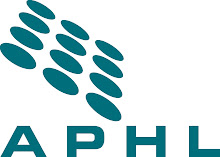The latest large-scale foodborne disease outbreak—involving Salmonella-tainted Italian salami products—has sickened at least 225 people in 44 states and Washington, DC. More than 50 are suffering illness severe enough to require hospitalization.
Coming on the heels of several high-profile, multi-state outbreaks involving everything from spinach to peanut butter, the latest incident raises questions about the safety of the food supply.
A quick review of the current outbreak reveals several trends.
1) The outbreak involves a collection of food items: about two dozen different ready-to-eat salami products. (Recall that a 2008-2009 Salmonella outbreak was linked to more than 400 different peanut-butter-containing foods).
2) The volume of products recalled is immense: more than 1.25 million pounds of meat.
3) The suspected source of the bacterium is an imported food item: the black pepper used to flavor the salami products.
In short, the food chain has become increasing convoluted and global in nature. Foods travel farther distances to reach consumers, and one product may contain ingredients sourced from several distinct producers (who may be based in the US or abroad, potentially in countries with more lax food safety regulations than the US). All of these factors increase the risk for contamination.
While APHL has no formal role in preventing food contamination, the association has played a pivotal role in detecting it so fewer people suffer illness. Laboratory-based surveillance—using the APHL/CDC PulseNet system—enables outbreaks to be identified much more swiftly than would otherwise be the case (including the ongoing salami-related outbreak), and undoubtedly detects small outbreaks that would otherwise go unnoticed. In the absence of more stringent food-safety regulations, PulseNet offers some assurance that tainted food products will be brought to the attention of state and federal authorities. In fact, the PulseNet system has proven so effective that there has been great interest in expanding it internationally.
APHL has also provided substantive input into the Guidelines for Foodborne Disease Outbreak Response recently released by the Council to Improve Foodborne Outbreak Response. These guidelines are important because they provide a model and benchmarks for the kind of multi-disciplinary and multi-agency collaboration essential to contain an outbreak. The recent Salmonella outbreak, for example, involves ingredients regulated by two different federal agencies: the USDA, which regulates meat, and the FDA, which regulates pepper.
Wednesday, February 17, 2010
Subscribe to:
Post Comments (Atom)





No comments:
Post a Comment